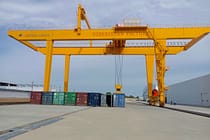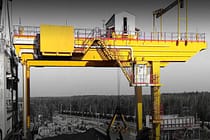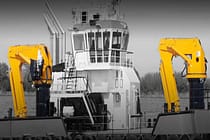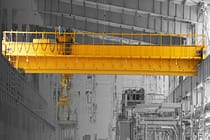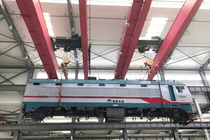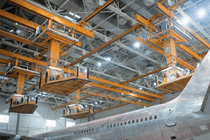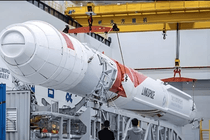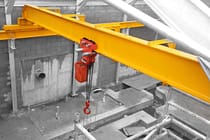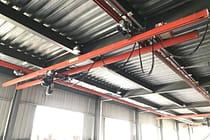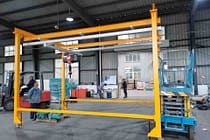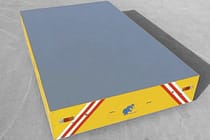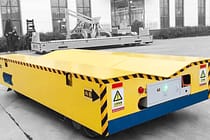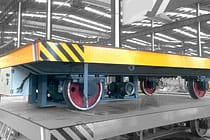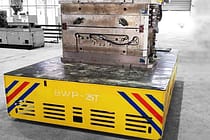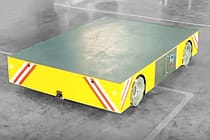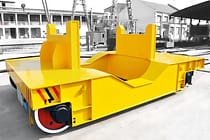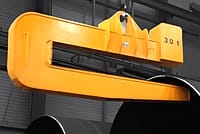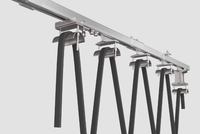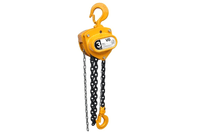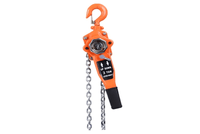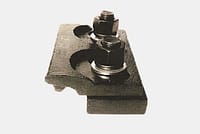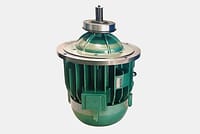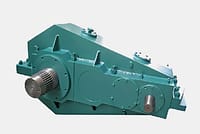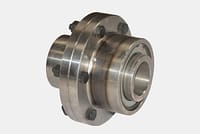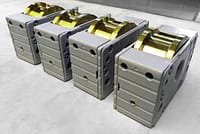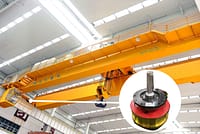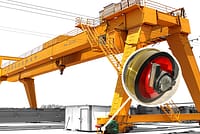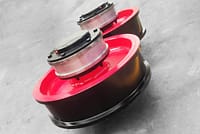How To Build An Overhead Crane?
Are you looking for a way to boost your manufacturing or construction business? Building your own overhead crane can be a game-changer in terms of productivity and efficiency. However, it can also seem like a daunting task if you don’t have the right information. In this article, we’ll provide a comprehensive guide on how to build an overhead crane from scratch.
Understanding Overhead Cranes
Before diving into the nitty-gritty of building an EOT crane, it’s important to understand what it is and how it works. An overhead crane is a type of lifting equipment that consists of a horizontal beam, called a bridge, supported by two end trucks. The bridge moves along a runway, allowing the hoist to pick up and move heavy loads.

Main Components Of An Overhead Crane
There are several components that make up an overhead crane. These include:
Bridge: The bridge is the main horizontal beam that spans the width of the building. It is typically made of steel and is supported by two-end trucks. The bridge moves along a runway, allowing the hoist to pick up and move heavy loads. Bridges can come in various sizes and strengths depending on the specific application and load capacity required.
Runway: The runway is the track on which the bridge travels. It’s usually attached to the ceiling or walls of the building. Ensuring that the runway is properly installed and level is critical to the safe and efficient operation of the bridge crane. Runways can be made of steel, concrete, or other materials depending on the requirements of the project.
End Trucks: The end trucks are the wheeled structures that support the bridge and allow it to move along the runway. They consist of wheels, axles, and bearings and are typically powered by electric motors. End trucks can come in various sizes and configurations depending on the weight and size of the bridge as well as the environment in which they will operate.
Hoist: The hoist is a vital component of the EOT crane system, responsible for lifting and moving the load. The hoist attaches to the bridge and employs either a wire rope or chain to raise the load. Choosing the hoist depends on factors such as load capacity and application requirements.
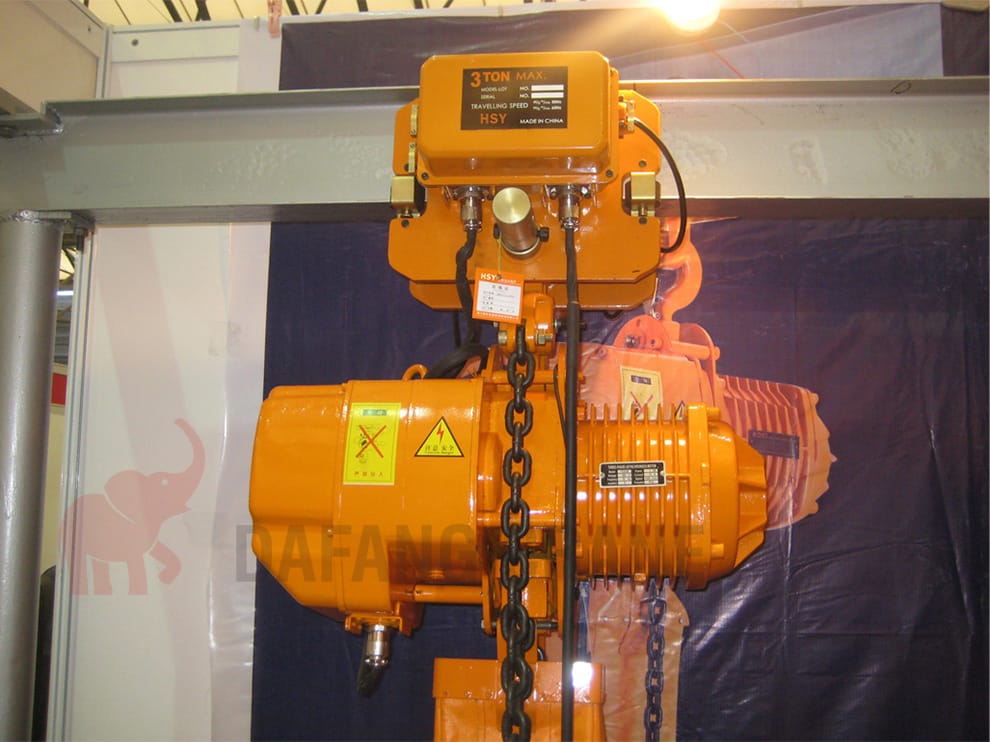
Controls: The controls are the buttons and switches that operate the crane. They’re typically located in a cab or pendant that hangs from the crane. The operator uses the controls to move the bridge, raise and lower the hoist, and control the speed of the crane. Using the right controls is crucial to ensure the safe and efficient operation of the overhead crane.

Designing Your Overhead Crane Before Build
Designing your overhead crane requires careful planning and attention to detail. Here are the steps involved:
- Determine the Load Capacity
Perhaps the most important factor when designing an EOT crane is determining the load capacity. This refers to the maximum weight that the crane will need to lift, which will impact the design and construction of the entire system. To accurately determine your load capacity, it’s essential to consider a variety of factors, including the weight of the materials being lifted, the distance they need to be carried, and any additional weight from rigging or attachments. - Choose Your Hoist
Once you’ve determined your load capacity, the next step is to choose the right hoist for your needs. There are many types of hoists available, each with its own set of benefits and drawbacks. Some common options include electric chain hoists, wire rope hoists, and manual hoists, each of which offers unique features that may be more suitable for certain applications. It’s also important to consider factors such as lifting speed, control options, and safety features when selecting your hoist. - Select Your End Trucks
End trucks play a critical role in supporting the bridge and allowing it to move along the runway. Choosing the right end trucks involves considering factors such as the type of wheel assembly, material construction, and load capacity. Additionally, you’ll need to select the right motor and drive mechanism to ensure smooth and reliable operation. - Design Your Bridge
The bridge design will depend on the layout of your building and the type of load you’ll be lifting. Make sure it’s strong enough to handle the load and has adequate clearance. The bridge should be designed to distribute the load evenly across the end trucks and runway. Consider using tapered beams or other specialized designs if necessary. - Choose Your Controls
Finally, selecting the right controls for your overhead crane is crucial to ensuring safe and efficient operation. There are many different types of controls available, ranging from simple pendant switches to more complex radio or infrared systems. When choosing your controls, it’s important to consider factors such as ease of use, operator safety, and compatibility with other system components.
Building Your Overhead Crane
Now that you have a design plan, it’s time to start building your crane. Here are the steps involved:
1: Build The Bridge
To build the bridge, you will need to use steel beams of appropriate size and length that match the span of your crane and make sure that the beams are stiffened and braced to prevent torsion or twisting. You should also ensure that the bridge is level and securely anchored to an elevated support structure. Lastly, verify that the bridge has the capacity to handle the expected loads and forces.
2: Install The Runway
The runway consists of steel rails that are bolted onto the support structure. It is essential to install the runway parallel to the bridge and at a suitable distance apart depending on the crane’s capacity. Ensure that the rails are level and aligned to prevent excessive wear and tear on the wheels of the end trucks. Additionally, check that the runway is straight and free of any obstructions that may impede the movement of the crane.
3: Attach The End Trucks
To attach the end trucks, you will need to mount them at each end of the bridge and secure them with bolts. Ensure that the wheels are aligned with the runway and that they can move freely without binding.
4: Install The Hoist
Firstly, we need to mount the hoist on the bridge using bolts and secure it properly. Secondly, we have to attach the wire rope to the drum of the hoist and adjust its tension accurately to avoid slack or sagging. Lastly, attach the hook to the wire rope to finish installing the hoist.
5: Wire The Controls
The controls should be located in a convenient and accessible position for the operator. Then connect the electrical cables to the motor, hoist, and control panel. Don’t forget to test the controls afterwards to ensure that everything is working as it should before you start using the crane.
Maintaining Your Overhead Crane After Build
Once your overhead crane is built, it’s important to maintain it properly. Here are some tips:
1: Inspect Regularly
You should conduct daily visual checks of the crane to ensure that everything is in its proper place. Look for any signs of wear or damage to cables, chains, hooks, or other components. Also, inspect the electrical components of the crane to ensure that they are functioning correctly.
In addition to daily inspections, you should perform more thorough annual inspections of your bridge crane. These inspections should be conducted by a qualified inspector who is trained to identify potential hazards and make recommendations for repairs or replacements. Annual inspections can help prevent breakdowns and extend the life of your crane.
2: Lubricate Moving Parts
Lubrication is key to the proper functioning of your overhead crane. Moving parts such as gears, bearings, and sheaves require regular lubrication to reduce friction and prevent wear.
3: Train Operators
Operators should be trained on the specific functions of the crane and should understand the safety procedures required for its use. Training should include instruction on the proper use of the controls, load capacity limitations, and safety procedures such as lockout/tagout. It is also essential that operators are trained to recognize potential hazards and respond appropriately to emergency situations.
Send Your Inquiry
- Email: sales@hndfcrane.com
- WhatsApp: +86-191 3738 6654
- Tel: +86-373-581 8299
- Fax: +86-373-215 7000
- Add: Changnao Industrial District, Xinxiang City, Henan Province, China








